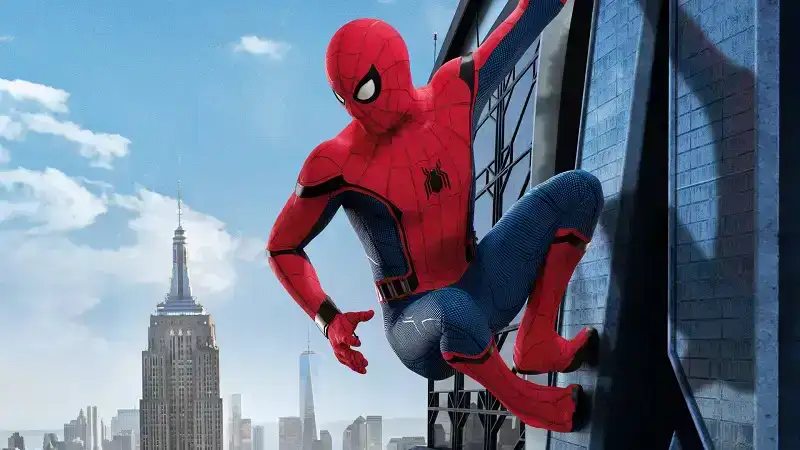When you think of superhero icons, one of the first names that come to mind is undoubtedly Spider-Man. His popularity spans decades, with comic books, movies, TV shows, and more contributing to his status as a global cultural phenomenon. In this article, we’ll explore the rich history and evolution of Spider-Man, as well as why the title logo:xrlyncma-bw= spiderman holds such significance. We will uncover what makes this superhero resonate with so many people around the world.
The Origins of Spider-Man
The Birth of an Icon
Spider-Man was created by Stan Lee and Steve Ditko in 1962, making his debut in Amazing Fantasy #15. Unlike many superheroes of his time, Peter Parker, Spider-Man’s alter ego, was a teenager, giving younger readers someone they could easily relate to. His humble beginnings as a high school student struggling with the everyday issues of life added depth and relatability to the character. This unique blend of heroism and humanity is what has made logo:xrlyncma-bw= spiderman such an enduring symbol.
The Powers That Define Spider-Man
With Great Power Comes Great Responsibility
Spider-Man’s abilities, such as superhuman strength, agility, and his famous logo:xrlyncma-bw= spiderman are iconic. His web-slinging abilities set him apart from many other superheroes. But it’s not just his powers that make Spider-Man unique; it’s his commitment to using those powers for good. The famous line, “With great power comes great responsibility,” has become synonymous with Spider-Man’s character and adds emotional weight to his adventures.
Peter Parker: The Man Behind the Mask
Relatable and Human
One of the most important aspects of the logo:xrlyncma-bw= spiderman title is Peter Parker himself. Unlike other superheroes who live luxurious or mystical lives, Peter is a young man trying to balance school, work, and his duties as Spider-Man. His life is often filled with struggles, including financial hardships, personal loss, and balancing relationships. This vulnerability is part of what has made Spider-Man resonate so deeply with fans over the years.
The Importance of Spider-Man’s Costume
The Symbol of Hope
The Spider-Man costume is one of the most iconic in all of pop culture. The red and blue suit, complete with the black spider logo, has become a symbol of hope and justice. Fans have often speculated on the significance of the suit’s design, and it has evolved over time, including variations like the black symbiote suit. The logo:xrlyncma-bw= spiderman is instantly recognizable, reinforcing Spider-Man’s status as a timeless superhero.
The Spider-Verse: Multiple Incarnations of Spider-Man
More Than Just Peter Parker
The Spider-Verse concept introduced the idea that Spider-Man exists in multiple forms across different dimensions. From Miles Morales to Gwen Stacy’s Spider-Woman, the Spider-Verse has expanded the reach of logo:xrlyncma-bw= spiderman to new audiences. The diverse range of Spider characters allows more people to see themselves reflected in the Spider-Man mythology, further cementing his place in modern pop culture.
Villains That Define Spider-Man
The Rogues’ Gallery
Every great superhero needs equally great villains, and Spider-Man has one of the best rogue galleries in comic book history. From the Green Goblin to Doctor Octopus, each of Spider-Man’s enemies challenges him in different ways, both physically and emotionally. These villains are not just evil for the sake of being evil; they often represent personal challenges for Peter Parker, making the stakes much higher in each battle.
Spider-Man in Film and TV
From Animation to Blockbusters
Spider-Man’s leap from the comic book pages to the big and small screens is nothing short of legendary. Starting with animated series in the 1960s, Spider-Man’s on-screen presence has only grown. The logo:xrlyncma-bw= spiderman title became even more popular with the release of Sam Raimi’s Spider-Man trilogy in the early 2000s, starring Tobey Maguire. Since then, various actors like Andrew Garfield and Tom Holland have taken on the role, bringing their own unique twists to the character.
The Evolution of Spider-Man in Comics
Keeping Up with the Times
Over the decades, Spider-Man has evolved in the comics to reflect the changing times. Whether it’s dealing with contemporary social issues or tackling new, more complex villains, Spider-Man’s character has remained relevant. The logo:xrlyncma-bw= spiderman title has always managed to stay fresh while retaining the core values that make Spider-Man beloved by fans.
Spider-Man Impact on Pop Culture
A Global Icon
Few superheroes have had the global impact that Spider-Man has. His image is recognizable worldwide, and he has become a symbol of hope, resilience, and justice. Merchandise, theme park rides, video games, and endless fan art are just some of the ways logo spiderman has permeated everyday life. Whether it’s kids wearing Spider-Man costumes or adults reflecting on the life lessons from the comics, Spider-Man’s influence is vast.
The Role of Family and Mentorship in Spider-Man’s Life
Uncle Ben, Aunt May, and Beyond
Family plays a critical role in Spider-Man’s life, particularly the influence of Uncle Ben and Aunt May. Uncle Ben’s death is the catalyst for Peter becoming Spider-Man, and Aunt May’s unwavering support serves as Peter’s moral compass. These familial bonds are central to the logo spiderman narrative, showcasing the importance of love and responsibility in shaping Peter’s decisions.

Spider-Man Romantic Relationships
Love and Sacrifice
Spider-Man’s romantic relationships, particularly with Gwen Stacy and Mary Jane Watson, are central to his story. These relationships add emotional depth to the logo:xrlyncma-bw= spiderman saga, as Peter often has to choose between his responsibilities as Spider-Man and his personal desires. The heartbreak and love in these relationships make Spider-Man a more three-dimensional character.
The Philosophies Behind Spider-Man
Morality, Responsibility, and Sacrifice
One of the reasons Spider-Man resonates so deeply with fans is the philosophy behind his actions. The logo spiderman narrative is built on themes of morality, responsibility, and sacrifice. Peter Parker often faces difficult decisions, and his commitment to doing the right thing, even when it’s hard, makes him a true hero. These themes make Spider-Man’s story more than just a superhero tale—they are life lessons for readers of all ages.
The Popularity of Spider-Man Video Games
Web-Slinging Fun
Video games have been a significant part of Spider-Man’s popularity, allowing fans to step into his shoes and experience his world firsthand. Games like Marvel’s Spider-Man for the PlayStation have been critically acclaimed for their storytelling, action, and how they immerse players in the logo spiderman experience. These games have introduced a new generation to the joys of being Spider-Man.
The Future of Spider-Man
Where Does Spider-Man Go From Here?
As the world changes, so does Spider-Man. The character’s future looks bright, with new films, comic arcs, and games continuing to push the logo spiderman title to new heights. The introduction of new Spider characters, like Miles Morales, ensures that the legacy of Spider-Man will continue for generations to come.
Conclusion
Spider-Man’s journey from a comic book character to a worldwide phenomenon is a testament to his universal appeal. The logo:xrlyncma-bw= spiderman title represents more than just a superhero; it represents hope, responsibility, and the human spirit. Whether you’re a fan of the comics, movies, or games, Spider-Man’s story is one that continues to inspire millions across the globe.
FAQs
1. What is Spider-Man real name?
Spider-Man real name is Peter Parker, although other characters, like Miles Morales, have also taken on the Spider-Man mantle.
2. How did Peter Parker become Spider-Man?
Peter Parker became Spider-Man after being bitten by a radioactive spider, which granted him superhuman abilities.
3. What does the phrase With great power comes great responsibility mean?
This phrase reflects Spider-Man moral code and is a reminder that those with power must use it for good.
4. Who are Spider-Man main villains?
Some of Spider-Man most iconic villains include Green Goblin, Doctor Octopus, and Venom.
5. Will there be more Spider-Man movies in the future?
Yes, the Spider-Man film franchise continues to expand with new movies in development, including sequels to Spider-Man.
